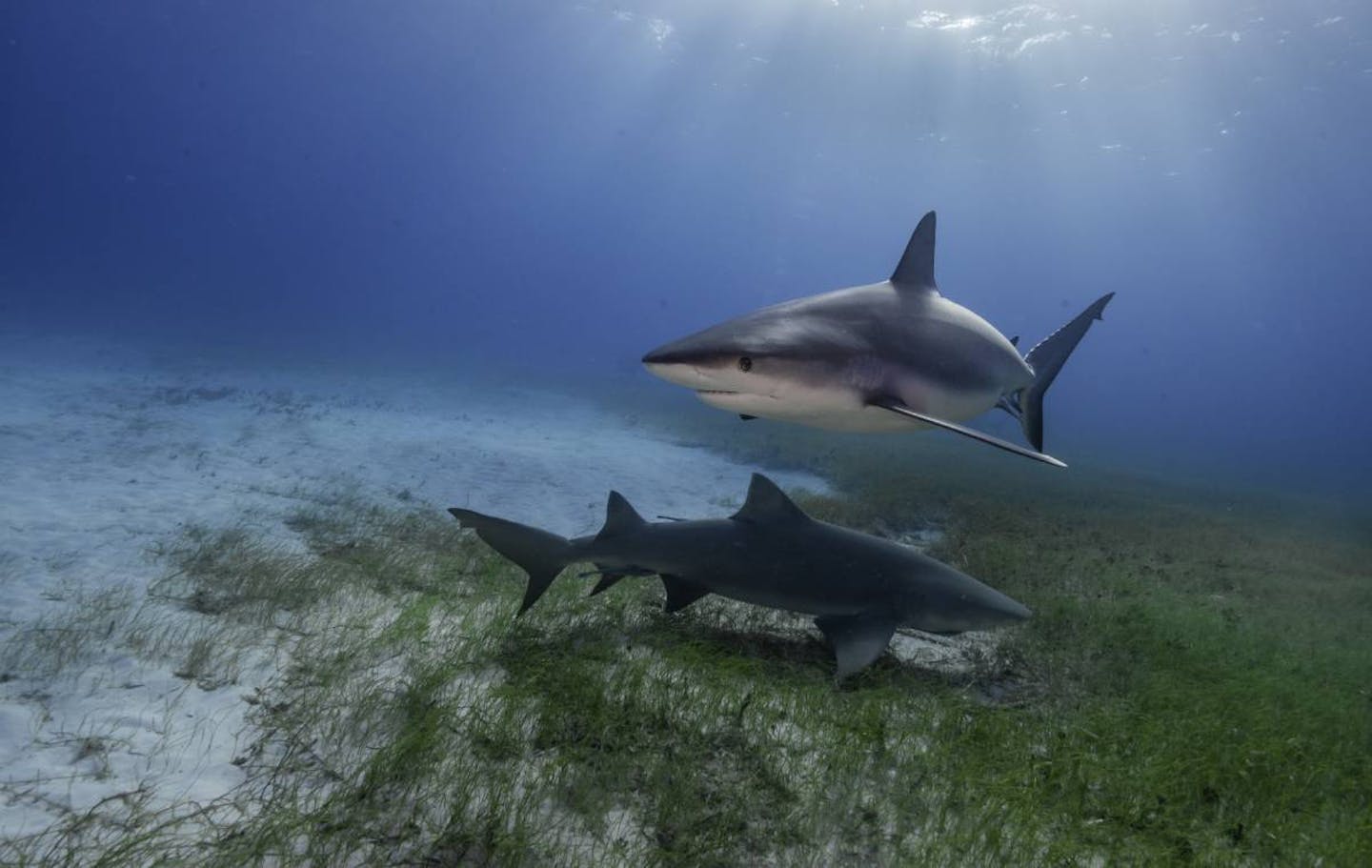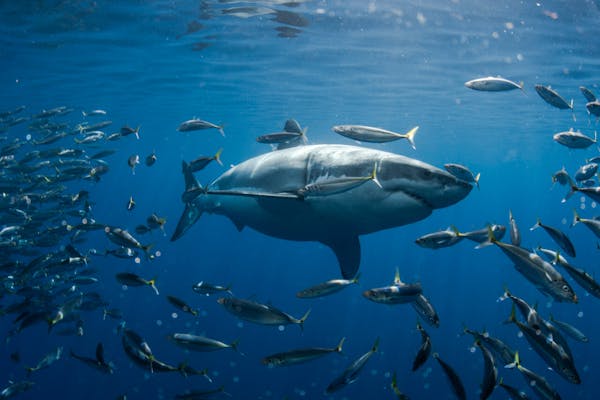How tiger sharks helped discover the world's largest seagrass ecosystem
Authors of a new study have collaborated with an unlikely group of partners to help map the largest seagrass ecosystem in the world — tiger sharks.
The extent of seagrasses globally is unknown, but with the help of tiger sharks, researchers were able to determine, for the first time, the full extent of the seagrass located in the Bahamas.
Tiger sharks are a wide-ranging apex predator found in the Bahamas Banks. Adults migrate long distances over banks and form concentrated spots at seasonal hotspots, often choosing seagrass as their preferred habitat.
Tiger sharks dive deeper than other shark species that prefer these habitats, making them ideal for helping to map seagrass ecosystems. The crystal clear waters on the Bahama Banks allow seagrass to grow well below standard depths accessible to SCUBA divers.
The researchers tagged and tracked individual, free-swimming tiger sharks and equipped them with biologging camera packages, including the first-ever deployment of a 360-degree camera borne by a marine animal. This provided the researchers with access to hours of ocean floor footage.
By utilizing existing spatial estimates, remote sensing, underwater diver surveys, and movement data obtained from the instrument-equipped tiger sharks, the authors of this groundbreaking study have identified an area of at least 66,000 km2 and up to 92,000 km2 of seagrass habitat across the Bahamas Banks.
This makes the seagrass ecosystem of the Bahamas the most extensive on the planet.
Seagrass plays a variety of essential ecological roles, including serving as a buffer from storms, providing a habitat for wildlife, and acting as a critical carbon sink.
Seagrasses pull carbon out of the environment and permanently store it in sediment, contributing about 15% to the total organic carbon buried in marine sediments each year.
The loss of seagrass ecosystems can release large amounts of carbon into the atmosphere, further worsening the climate crisis. Conservation efforts are critical to keeping the world below the dangerous threshold of a 1.5°C global average temperature rise.
However, conserving these ecosystems first requires knowledge of their distribution and extent.
This study marks the first time a country has mapped the complete extent of its seagrass ecosystems, and researchers hope many countries in the Caribbean will replicate this remarkable approach using sharks as underwater surveyors.
Read Full Report


.jpg?auto=compress%2Cformat&h=600&w=600)

